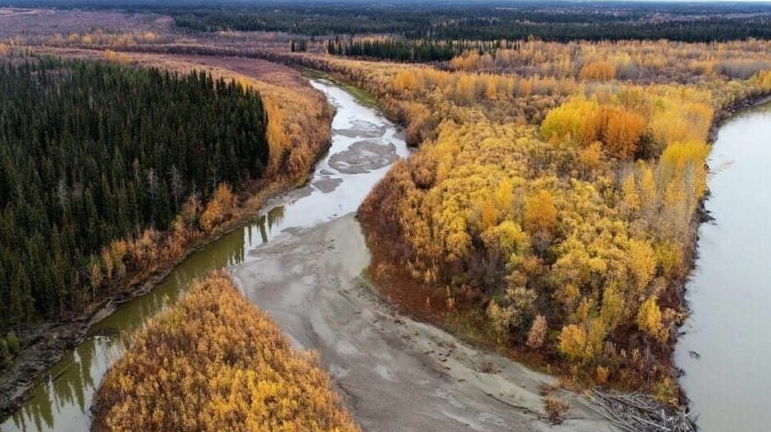‘Mercury Bomb’ Threatened by Arctic Permafrost Thaw (GS Paper 3, Environment)

Introduction
- Recent research has unveiled a potentially catastrophic environmental issue in the Arctic: the release of mercury from thawing permafrost.
- Studies of sediment from Alaska’s Yukon River have shown that eroding permafrost is contributing significant amounts of mercury-laden sediments to the river system, raising concerns about the potential impact on both local and global scales.
Understanding the ‘Mercury Bomb’
- In the Arctic, mercury accumulates in the environment through a natural process.
- Plants absorb mercury from the soil, and when these plants die, their remains contribute to the formation of permafrost.
- Over millennia, the mercury in these organic remains becomes concentrated in the frozen soil. This accumulation results in permafrost containing more mercury than is found in the total of all oceans, soils, atmospheres, and biospheres combined.
- As climate change accelerates, permafrost is thawing at an unprecedented rate.
- This thawing releases the trapped mercury into the environment, which then becomes mobilized in rivers and can enter the food chain.
- The potential release of this mercury has been described as a ‘giant mercury bomb,’ posing significant risks to ecosystems and human health.
What is Permafrost?
- Permafrost is defined as ground that remains at or below 0°C for at least two consecutive years.
- It consists of a mixture of soil, rocks, and sand, all held together by ice.
- Although permafrost is often associated with snow-covered landscapes, it can exist in areas that are not perpetually snowy.
- Significant permafrost regions include parts of Greenland, Alaska, Canada, Russia, and Eastern Europe.
Consequences of Permafrost Thawing
The thawing of permafrost carries several environmental and infrastructural consequences:
- Disruption of Ecosystems: Melting permafrost alters the habitat for plants and animals, potentially disrupting local ecosystems and threatening biodiversity. The changing conditions can lead to shifts in species distributions and impact food webs.
- Infrastructure Damage: As permafrost melts, the previously stable ground becomes unstable. This can cause the sinking or collapse of buildings, roads, pipelines, and other critical infrastructure, leading to significant economic and logistical challenges.
- Release of Pathogens: Permafrost acts as a repository for ancient bacteria and viruses. Thawing could potentially release these pathogens, posing risks of new or re-emerging diseases to humans and wildlife.
- Accelerated Global Warming: The decomposition of organic matter trapped in the frozen ground releases carbon dioxide and methane, potent greenhouse gases that contribute to global warming and climate change.
Mercury: A Hazardous Element
- Mercury is a naturally occurring chemical element, known for its shiny, silver-white appearance and its status as a liquid at room temperature.
- It is released into the environment through both natural processes, such as volcanic eruptions and weathering of rocks, and human activities, such as the burning of fossil fuels.
- Mercury is highly toxic and can affect multiple systems in the body, including the nervous, digestive, and immune systems.
- It also poses risks to the lungs, kidneys, skin, and eyes. In aquatic environments, mercury can bioaccumulate in fish, leading to health risks for humans who consume contaminated seafood.
Conclusion
- The threat posed by the release of mercury from thawing permafrost underscores the broader implications of climate change.
- As Arctic regions continue to warm, the environmental impacts extend beyond the immediate effects of temperature increases, revealing complex challenges related to mercury contamination, ecosystem stability, and public health.
- Addressing these issues will require a multifaceted approach that includes monitoring, research, and policy interventions aimed at mitigating the consequences of permafrost thaw and safeguarding both natural and human systems.


